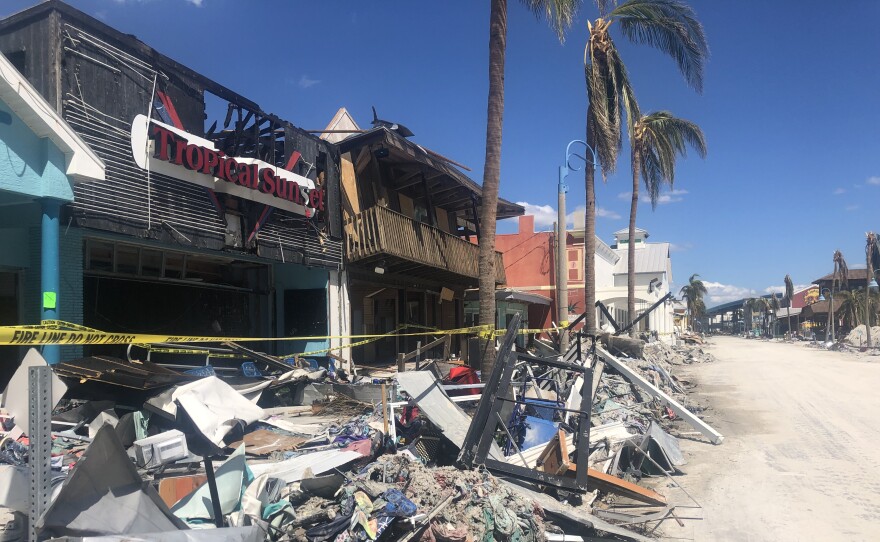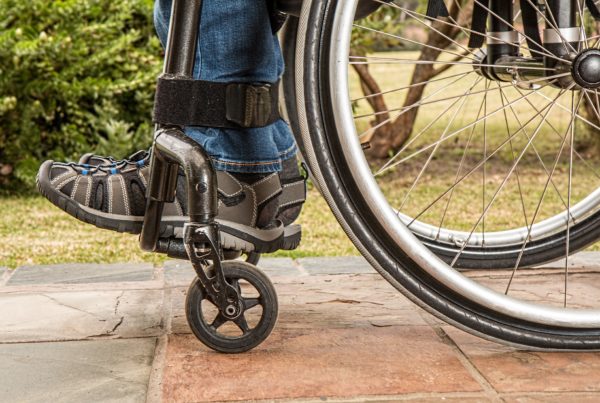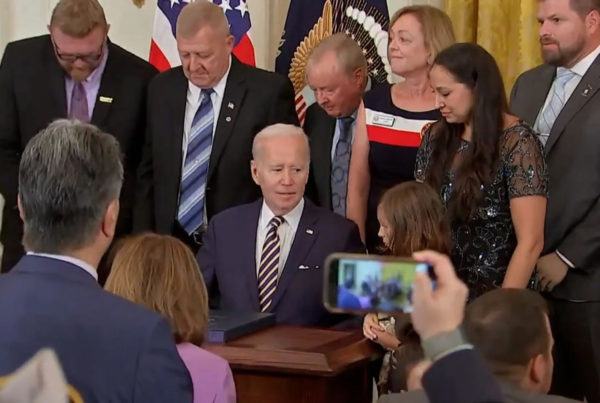Hurricane Ian made landfall in Florida as a Category 4 storm last week, bringing high winds, devastating storm surge and heavy flooding to the Sunshine State. The death toll stood at nearly 100 people as of Monday afternoon. The storm also caused billions of dollars worth of property damage, with final figures are yet to be determined.
Now that the waters have receded, Floridians are left to recover from the havoc wreaked on their communities. Power outages and water usage concerns have plagued the state for the past several days.
While the timeline of recovery isn’t exactly clear, a team from the Lone Star State is helping with early relief efforts: Gov. Greg Abbott deployed Texas A&M Task Force One to Florida just before Hurricane Ian made landfall. The task force, one of several federal teams under FEMA’s Urban Search and Rescue System, includes a 45-person search-and-rescue team, four boats and two search dogs.
Texas A&M Task Force One member Joshua Todd joined the Texas Standard from Florida to discuss hurricane recovery efforts.
This transcript has been edited lightly for clarity:
Texas Standard: What part of Florida is your team at right now?
Joshua Todd: Currently, we’re in Fort Myers Beach, conducting some search operations in the middle of the island.
As you look around, what’s the situation you’re seeing?
There is significant devastation. Along the entire coastal line, many of the buildings have been scoured and are collapsed and displaced from their foundations. There’s debris strewn about – just very, very impressive damage.
What challenges are residents facing in the aftermath?
The affected community has no water, no power. There’s no way for them to maintain phone connectivity and Internet access, and reach out to family and friends. There’s limited ability to store food in their refrigerators. There’s very few services available to them because the infrastructure has been so heavily impacted.
The local community is in the process of encouraging people to evacuate the island so they can be better served in an area where they can be provided those services, because there’s nothing really left to make them able to stay in their houses.
As a member of Texas A&M Task Force One, what are you and your team doing?
Our focus is on search and rescue. We have spent the last few days searching for survivors and doing preliminary recon and some damage assessments. Unfortunately, as the timetable gets further from impact, the potential survivability decreases. We’re hoping that in the event that we find people that are deceased, we’re able to bring closure to their family members and return them to their loved ones.
I can’t really get into the specifics, but there have been a number of fatalities in the area, and that’s an unfortunate consequence of those collapsed buildings and the high water levels.
How long will you continue to stay there, and what does your mission look like at this juncture?
Currently, we’re transitioning into some secondary search operations, which is a more intensive, in-depth search to make sure that we locate anybody that the more rapid initial search is missed. We plan on being here probably through the next week or so. There’s still other task forces from around the country that are in the process of arriving. We’re bringing in more search and rescue dogs and additional assets. So, we may be here for an extended period of time.
What is the latest thinking on where the hurricane’s death toll numbers are heading?
Unfortunately, I think there is a potential that we could discover additional casualties, but I don’t have good information on what those predictions are. I think we have probably located the majority of casualties and hopefully we don’t find more.













